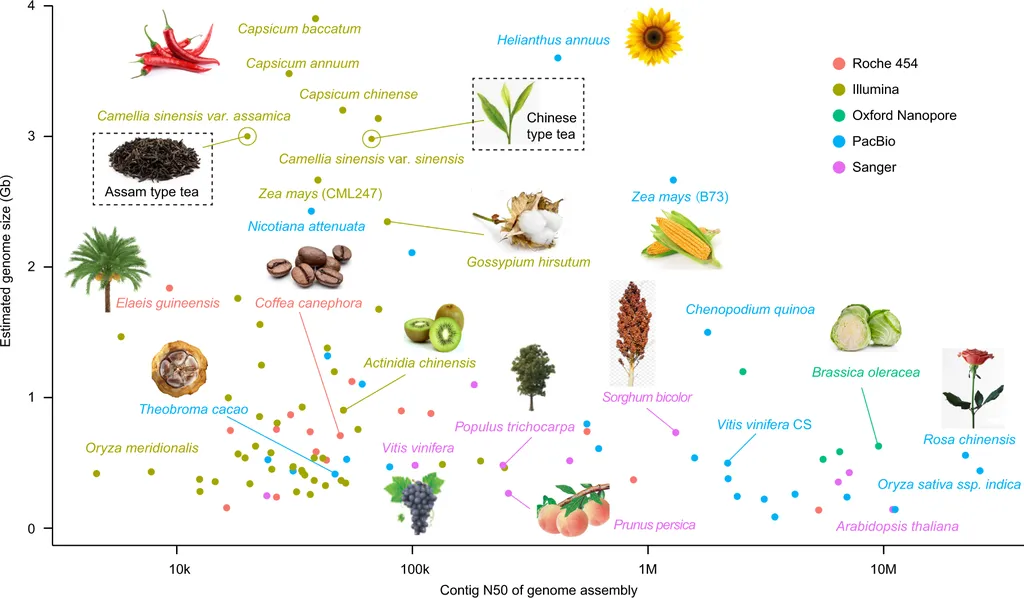In the heart of China, researchers have unlocked new insights into the genetic blueprint of one of the world’s most beloved crops: tea. A team led by Zhiyin Chen from the College of Agriculture and Biotechnology at Hunan University of Humanities, Science and Technology has published a groundbreaking study in the journal *Frontiers in Plant Science* (translated from the original Chinese title), offering a detailed analysis of the mitochondrial genome of the tea cultivar ‘Zhuyeqi’ (Camellia sinensis cv. ‘Zhuyeqi’). This research not only sheds light on the evolutionary history of tea plants but also paves the way for advancements in genetic breeding and molecular biology.
The mitochondrial genome of ‘Zhuyeqi’ is a complex structure, consisting of one circular chromosome and six linear chromosomes, totaling 911,255 base pairs. “This multichromosomal structure is quite unique and provides a fascinating glimpse into the genetic diversity of tea plants,” Chen explains. The genome contains 77 functional genes, including 38 protein-coding genes, which are essential for various cellular functions.
One of the most intriguing findings of the study is the presence of RNA editing sites. The researchers identified 556 C-to-U editing sites, with a notable enrichment in genes like ccmFn and ccmB. “RNA editing is a crucial process that can significantly impact gene expression and function,” Chen notes. “Understanding these editing sites helps us comprehend how tea plants adapt and evolve.”
The study also delved into the codon usage bias, revealing that leucine and arginine are the most frequently used amino acids. This information is vital for genetic engineering efforts aimed at improving tea plant traits. Additionally, the researchers found that dispersed repeats dominate the genome, with satellite DNA showing significant distribution biases on certain chromosomes.
Comparative genomics uncovered 66 homologous segments between the mitochondrial and chloroplast genomes, confirming horizontal gene transfer events. “This finding highlights the dynamic nature of tea plant genomes and their ability to incorporate genetic material from different sources,” Chen says.
The implications of this research are far-reaching. By understanding the structural features and evolutionary dynamics of the tea plant mitochondrial genome, scientists can develop more robust and resilient tea cultivars. This is particularly important for the energy sector, as tea plants are not only a valuable economic crop but also play a role in carbon sequestration and biodiversity conservation.
“This study lays an important theoretical foundation for further elucidating the structural characteristics and evolutionary mechanisms of the tea plant mitochondrial genome,” Chen concludes. As we continue to unravel the genetic secrets of tea plants, we open up new possibilities for sustainable agriculture and environmental conservation.
In the ever-evolving landscape of agritech, this research stands as a testament to the power of genetic exploration. By harnessing the insights gained from this study, we can cultivate a greener, more resilient future for one of the world’s most cherished crops.

